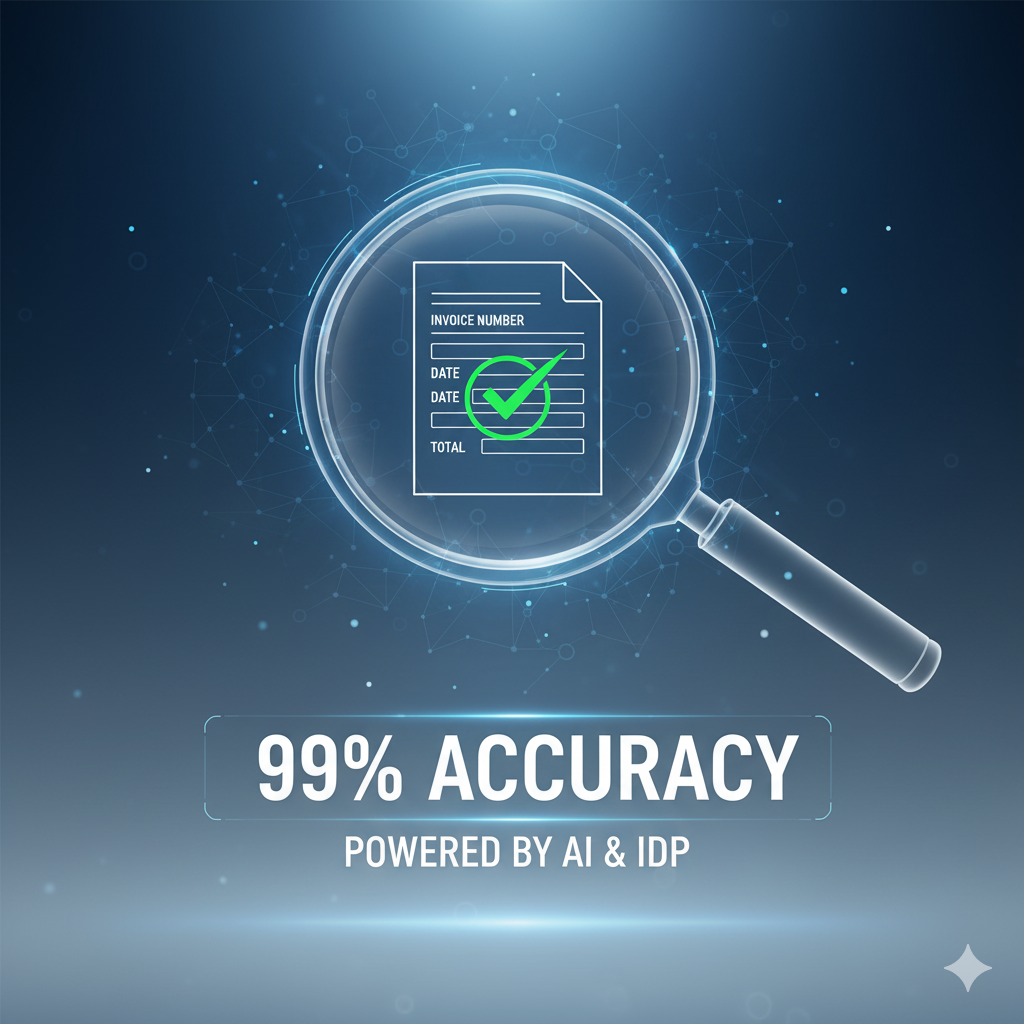Your business runs on data. But for most companies, a massive portion of this critical data—up to 80%, according to some estimates—is “unstructured.”
It exists in a chaotic state, locked away in formats that computers cannot easily read or analyze.
This unstructured data is the dark matter of your business universe.
It’s hidden within:
- Email bodies and attachments
- Supplier invoices and purchase orders
- Shipping manifests and delivery notes
- Customer contracts and support tickets
- Scanned PDFs and image files
Manually sifting through this chaos is impossibly slow and expensive.
But ignoring it means you are making critical business decisions with only a fraction of the available information.
The solution is to apply intelligent technology that can automatically transform this chaos into the clear, structured data you need to gain a competitive edge.
What Is Unstructured Data?
It’s helpful to first draw a clear distinction.
- Structured Data is highly organized and easily searchable. Think of a perfectly formatted Excel spreadsheet or a database table. Every piece of data has a specific label and resides in a predetermined field (e.g.,
Customer_ID,Amount_Due). - Unstructured Data is everything else. It is free-form and has no pre-defined data model. An email, a PDF invoice, or a legal contract are prime examples. The information is all there, but it’s embedded within narrative text and variable layouts.
Your team spends hours manually reading this unstructured data to find the few key pieces of information they need—a process that is inefficient, error-prone, and impossible to scale.
The Three-Step Process to Clarity
Intelligent data extraction, powered by Intelligent Document Processing (IDP), provides a reliable, automated pathway to turn your unstructured documents into a source of clear, actionable insight.
The process follows three essential steps.
- Ingest
- First, the system must gather all the raw documents, regardless of their source or format. A powerful platform can ingest information from a wide variety of channels simultaneously, including:
- Dedicated email inboxes (e.g.,
invoices@yourcompany.co.za) - Scanned images from multifunction printers
- File uploads to a secure web portal
- Folders on a shared network drive
- API connections with other software
- Dedicated email inboxes (e.g.,
- First, the system must gather all the raw documents, regardless of their source or format. A powerful platform can ingest information from a wide variety of channels simultaneously, including:
- Extract and Structure
- This is the core of the transformation. Once a document is ingested, the IDP solution uses advanced AI, not rigid templates, to read and understand it.
- Text Recognition: It first converts any images (like scanned PDFs) into machine-readable text.
- Contextual Understanding: Using Natural Language Processing (NLP), the system identifies key data points based on context, not just their location. It knows the “Total Amount” because it’s near the word “Total,” not because it’s always in the bottom-right corner.
- Structuring: The system then extracts this information and organises it into a clean, structured format. That chaotic, multi-page PDF invoice is transformed into a simple, usable data file, like this:
- This is the core of the transformation. Once a document is ingested, the IDP solution uses advanced AI, not rigid templates, to read and understand it.
| Field | Value |
Supplier_Name | ABC Logistics |
Invoice_Number | INV-9042 |
Invoice_Date | 2025-10-27 |
Line_Item_1_Desc | Pallet Transport |
Line_Item_1_Qty | 5 |
Line_Item_1_Price | R 1,500.00 |
Total_Amount | R 7,500.00 |
VAT | R 1,125.00 |
- Validate and Deliver
- Extracted data is only useful if it’s accurate. The final step is to validate the structured information against your business’s existing records.
- Automatic Validation: The system can connect directly to your ERP or accounting software to perform checks. Does
Supplier_Namematch a vendor in your master file? DoesPO_Numbermatch an open purchase order? - Flagging Exceptions: If a mismatch is found or data is missing, the document is flagged for a human to review. This “exception handling” approach means your team only spends time on the 1-2% of documents that actually require their attention, not the 98% that are correct.
- Delivery: Once validated, this clean, structured data is posted directly into your ERP, financial system, or business intelligence dashboard.
- Automatic Validation: The system can connect directly to your ERP or accounting software to perform checks. Does
- Extracted data is only useful if it’s accurate. The final step is to validate the structured information against your business’s existing records.
The Business Benefits of This Transformation
When you move from chaotic data to structured clarity, you unlock powerful, tangible benefits that ripple across your entire organisation.
- You Make Smarter Decisions, Faster
- Instead of guessing, your leadership team gains access to real-time, accurate data. You can analyse spend patterns across all suppliers, identify your most and least profitable shipping routes, or track inventory levels with line-item precision. This allows you to base your strategy on facts, not guesswork.
- You Drastically Increase Operational Efficiency
- You eliminate the single greatest bottleneck in your workflows: manual data entry. This accelerates every process, from invoice approvals to shipment processing. Your teams can handle significantly higher volumes of work without needing to add more staff.
- You Reduce Costly Errors
- Automated extraction with a 99%+ accuracy rate virtually eliminates the human errors that lead to overpayments, incorrect shipments, or compliance failures. This saves you money directly by preventing financial leaks and indirectly by removing the high cost of correcting those errors.
- You Empower Your Team
- You free your skilled professionals from the mind-numbing work of keying in data. They are elevated to more valuable, analytical roles—managing exceptions, analysing trends, and finding new ways to optimise your operations.
Conclusion
Your unstructured documents are not an administrative burden; they are an untapped strategic asset.
By implementing intelligent data extraction, you put a system in place to automatically mine this asset for value every single day.
You turn the chaos of your paperwork into a clear, reliable stream of actionable data that fuels smarter decisions, drives efficiency, and gives your business the clarity it needs to succeed.





